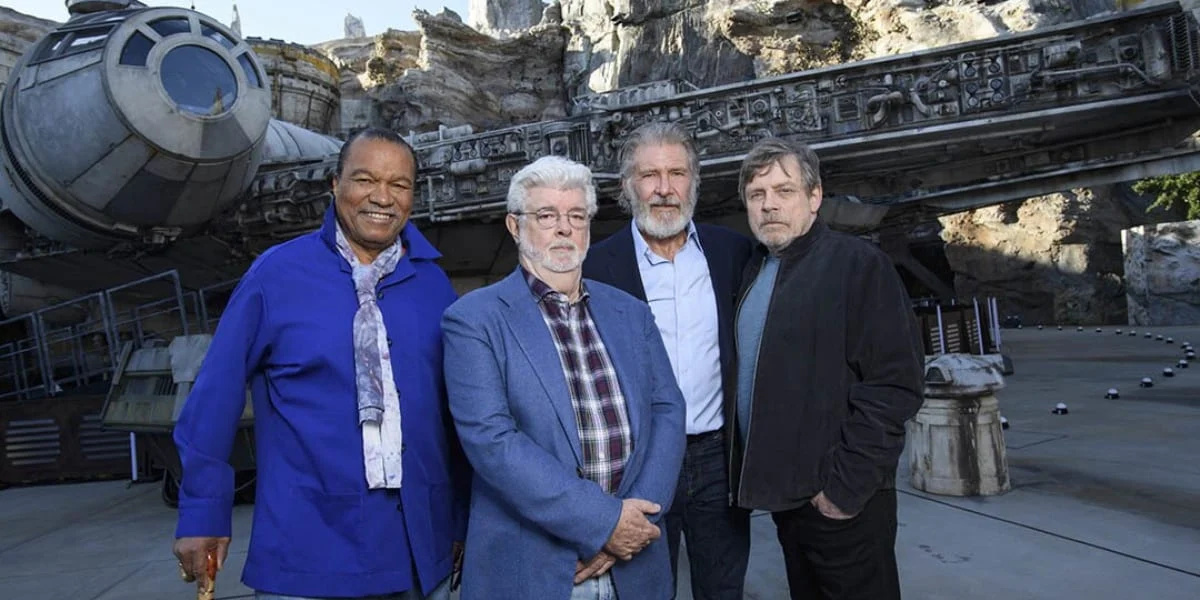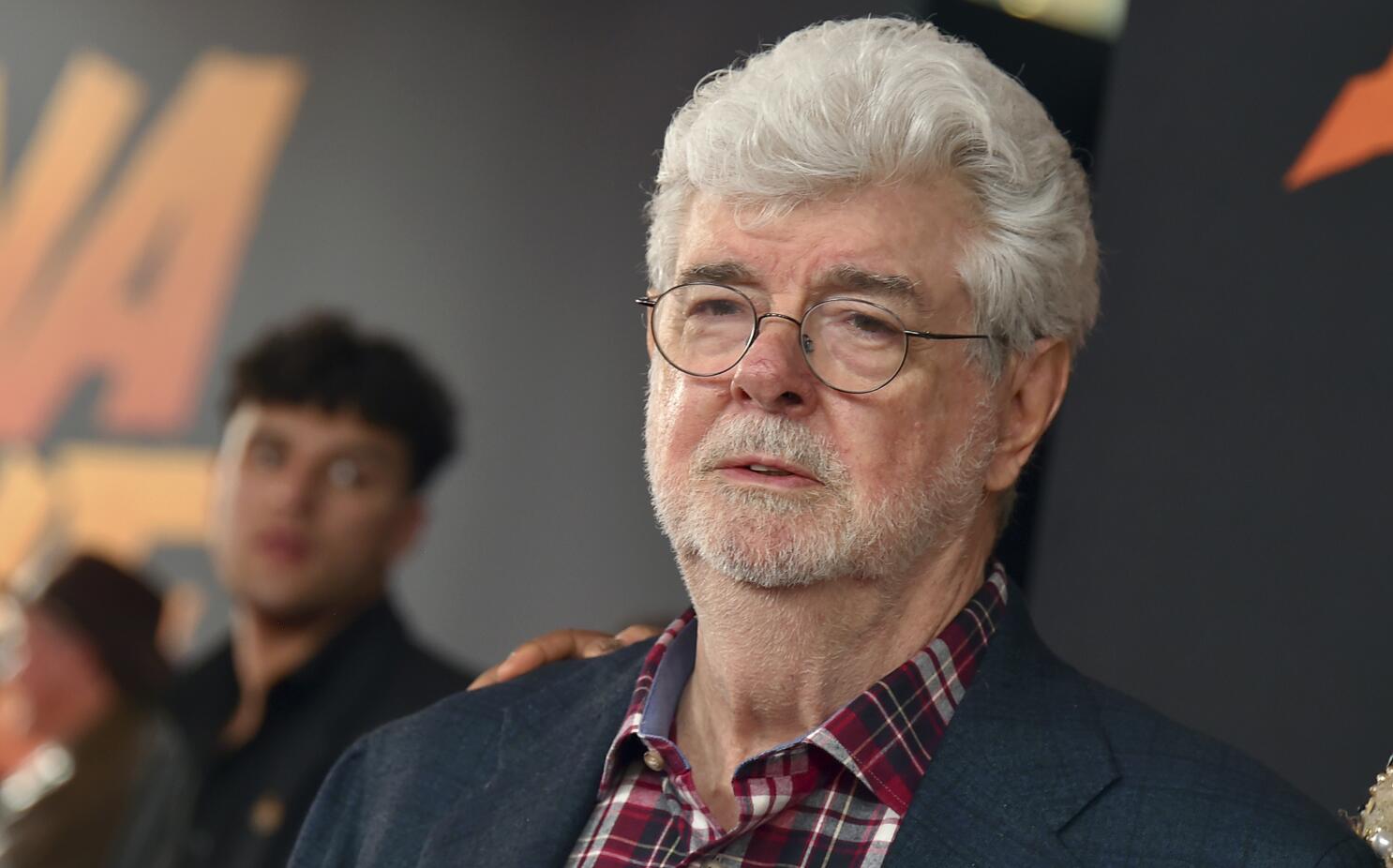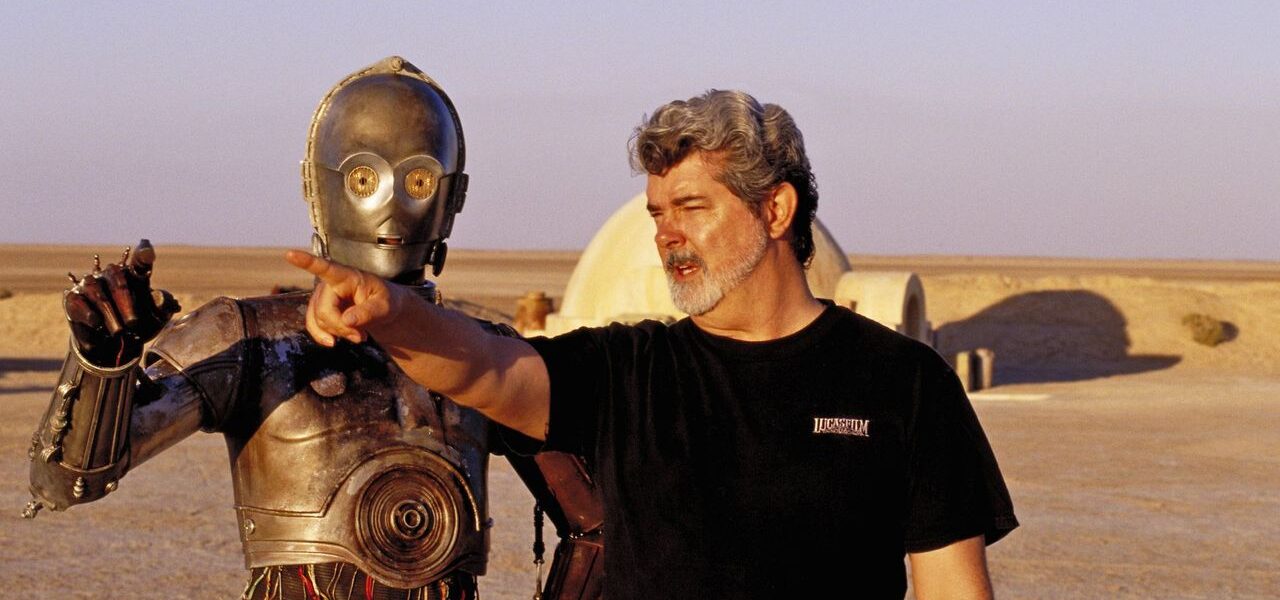George Lucas is one of the most influential figures in the history of cinema, best known as the creator of the iconic Star Wars franchise. His contributions to the film industry extend beyond his work as a director and writer; Lucas has also been a pioneering force in the fields of special effects, sound design, and digital filmmaking. This article explores Lucas’s early life, his groundbreaking work in the film industry, his legacy, and his impact on modern filmmaking.
Early Life and Education George Lucas

George Walton Lucas Jr. was born on May 14, 1944, in Modesto, California. His early years were marked by a passion for cars and racing, which influenced his later work. Initially aspiring to be a race car driver, Lucas’s life took a different turn after a near-fatal car accident during his teenage years. This incident shifted his focus towards other interests, including film and photography.
George Lucas attended Modesto Junior College, where he studied anthropology, sociology, and literature. His interest in film grew, leading him to transfer to the University of Southern California’s School of Cinematic Arts. At USC, Lucas created several short films, including “THX 1138 4EB,” which won first prize at the National Student Film Festival.
Early Career and Breakthrough
After graduating, Lucas co-founded the production company American Zoetrope with fellow filmmaker Francis Ford Coppola. Lucas’s first feature-length film, “THX 1138,” was released in 1971, based on his earlier student film. Although it received mixed reviews and was a commercial failure, it established Lucas as a director with a unique vision.
Lucas’s next project, “American Graffiti” (1973), was a nostalgic look at teenage life in the early 1960s. The film was both a critical and commercial success, earning five Academy Award nominations and grossing over $140 million worldwide. “American Graffiti” showcased Lucas’s ability to capture the essence of a specific time and place, and its success gave him the freedom to pursue his next ambitious project: Star Wars.
The Creation of Star Wars
The idea for Star Wars came to Lucas in the early 1970s, inspired by his love of mythology, comic books, and serial adventure films. Drawing from diverse influences, including the works of Joseph Campbell and Akira Kurosawa, Lucas began crafting a story set in a distant galaxy.
Lucas faced numerous challenges in getting Star Wars made. Major studios were skeptical about the project’s commercial viability, and Lucas had to fight for creative control. Ultimately, 20th Century Fox agreed to finance the film, and production began in 1976.
When “Star Wars” (later retitled “Star Wars: Episode IV – A New Hope”) was released in 1977, it was an unprecedented success. The film broke box office records, earning over $775 million worldwide, and became a cultural phenomenon. Its groundbreaking special effects, memorable characters, and epic story captivated audiences and redefined the science fiction genre.
Innovations in Filmmaking

George Lucas’s impact on the film industry extends beyond the success of Star Wars. His dedication to advancing filmmaking technology has left a lasting legacy.
Special Effects and ILM
George Lucas founded Industrial Light & Magic (ILM) in 1975 to create the special effects for Star Wars. ILM revolutionized the field of visual effects, developing new techniques and technologies that have since become industry standards. Innovations such as motion control photography, computer-generated imagery (CGI), and digital compositing were pioneered by ILM, setting new benchmarks for what was possible in filmmaking.
Sound Design and Skywalker Sound
George Lucas also emphasized the importance of sound in storytelling. He established Skywalker Sound, a state-of-the-art audio post-production facility, to ensure the highest quality sound for his films. The innovative sound design in Star Wars, including the iconic sounds of lightsabers and droids, showcased the power of audio in enhancing the cinematic experience.
Digital Filmmaking and Editing
In the 1990s, Lucas became a leading advocate for digital filmmaking. He played a crucial role in the development and adoption of digital cameras and editing systems, which have since become standard tools in the industry. “Star Wars: Episode I – The Phantom Menace” (1999) was one of the first major films to be shot entirely with digital cameras, demonstrating the potential of digital technology in filmmaking.
The Star Wars Saga and Beyond

Following the success of the original Star Wars trilogy, Lucas continued to expand the franchise with a prequel trilogy, beginning with “The Phantom Menace.” While the prequels were commercially successful, they received mixed reactions from critics and fans. Nevertheless, they introduced new characters, worlds, and technological advancements that further enriched the Star Wars universe.
In 2012, George Lucas sold Lucasfilm to The Walt Disney Company for over $4 billion. This move allowed Disney to continue the Star Wars saga with a new trilogy and various spin-off projects, while Lucas shifted his focus to other endeavors.
Philanthropy and Legacy
Beyond his contributions to film, George Lucas is also known for latoto his philanthropic efforts. He has donated substantial portions of his wealth to educational initiatives and institutions, including the George Lucas Educational Foundation, which promotes innovative teaching methods and lifelong learning.
Lucas’s legacy is evident in the countless filmmakers and creatives he has inspired. His vision and determination revolutionized the film industry, pushing the boundaries of what is possible in storytelling and technology. The enduring popularity of Star Wars and the ongoing success of Lucasfilm under Disney’s ownership are testaments to the lasting impact of his work.
Conclusion George Lucas
George Lucas’s influence on modern filmmaking is profound and far-reaching. From creating one of the most beloved film franchises of all time to pioneering advancements in special effects and digital technology, Lucas has left an indelible mark on the industry. His dedication to storytelling, innovation, and philanthropy continues to inspire and shape the future of cinema. As new generations of filmmakers build on his legacy, George Lucas’s contributions to the art and science of filmmaking will be remembered and celebrated for years to come.
Read More Article About “NPO 1: A Comprehensive Overview of Dutch Public Broadcasting“
















